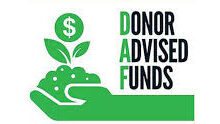As fellow humans, our hearts go out to all people around the world whose lives have been upended by the coronavirus pandemic and the volatile economy. As fundraisers, our thoughts turn to our clients and other charitable organizations who depend on fundraising dollars to keep their doors open and their missions moving forward.
For all nonprofits, it is wise to expect some impact to your bottom line—and plan accordingly. So, what can you do NOW to strengthen donor relationships and minimize the impact on your campaigns? Here are 10 tips to follow in the days and weeks ahead:
- Conduct a regular, short communications meeting that includes people, across multiple departments, who communicate with your donors and the public. This might be daily or two times a week. Especially now, it’s important for your messaging to be consistent from all departments.
- Don’t try to connect the disaster to your mission unless there is a genuine connection. It will feel forced and false.
- Make sure that the fundraising messages you are sending deliver a clear and compelling description of YOUR urgent need for funds. If donors are forced to support fewer charities, make sure they understand why your organization should stay on the top of their list.
- Consider adding an additional “urgent” appeal or email campaign to your best donor segments. Loyal donors can be counted on to fill the gap in tough times. In this case, you can reference the crisis and any shortfall that has resulted.
- Provide information on your website home page about how your organization is responding to the crisis. For example, if you are cancelling programs or working remotely, make it easy for people to find this information.
- Consider an email from your CEO or President to your major and mid-level donors, simply letting them know you are thinking of them during this challenging time. Do not ask for anything. And provide them with a phone number for someone on your staff to reach out to.
- Consider adding some follow up phone calls to key segments of your donor base to boost response to letters and email campaigns.
- Be prepared. Even with your best efforts, this year’s campaigns might be a bit soft. Begin planning now for ways to augment any shortfalls in your campaigns.
- Don’t forget internal communications. Keeping your staff well informed about organizational decisions during a crisis can reduce stress and help people keep their “eyes on the prize” in terms of their work.
- Finally, keep your own community strong by donating generously to the front line organizations that are assisting your most vulnerable neighbors during the crisis.
Photo credit: eGuide Travel Used under a Creative Commons (CC-BY-2.0) license




0 Comments